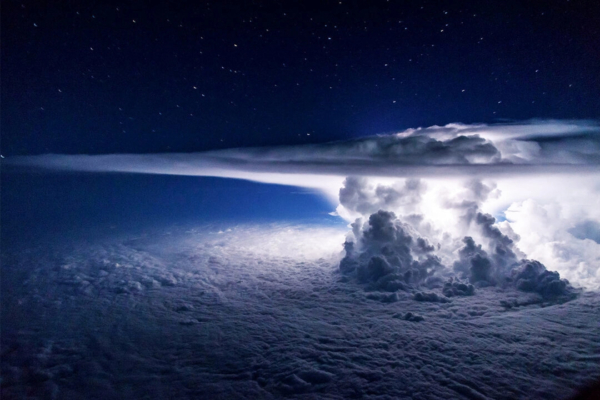From Ecuador, a pilot and storm photographer captured a series of stunning storm landscapes from 40,000 feet (approximately 12,000 meters) high.
Santiago Borja, a former software engineer, is now piloting a Boeing 767 for a major Ecuadorian airline. Before becoming a storm photographer, Borja only pursued photography as a hobby, starting with an old film camera inherited from his father before transitioning to a digital SLR camera.
“Storms have always fascinated me, and I have been thinking about how to capture such beautiful and awe-inspiring natural phenomena,” he told The Epoch Times. “I tried different shooting environments and techniques, and finally came up with a method to continuously capture storms from an aircraft in flight.”
Flying at altitudes ranging from 30,000 to 40,000 feet (approximately 9,100 to 12,000 meters), Borja often encounters clouds of varying intensity. Almost every flight he takes is surrounded by medium-intensity storms.
As a commercial pilot, Borja cannot alter his flight path, but he seizes every opportunity to capture stunning images. “If the aircraft is too close to the storm or cloud system, turbulence and the clouds themselves will block the lens, making it impossible to photograph,” he explained. “I need relative calm in the air to capture these storms.”
Many wonder how Borja manages to take such incredible photos while flying. Due to his frequent transatlantic flights, the aircraft has four pilots, including himself, who take turns flying. This rotation gives Borja four hours of rest time on each flight, which he uses for sleep and photography.
His proudest achievement so far is a piece titled “Pacific Storm,” captured over the Pacific Ocean in 2016. This photo earned him third place in National Geographic’s global photography contest that year, and it has been widely viewed by scientists around the world.
“Through conversations with everyone interested in this photo, I have learned a lot about meteorology and science,” Borja said.
This success inspired him to publish his own photography book called “The Storm Pilot.”
Borja emphasized that storm photography “requires a lot of luck and trial and error.” The high-quality glass windows surrounding the cockpit minimize glare, giving him an advantage. However, factors like light intensity are beyond his control.
“The stronger the light, the harder it is to capture the storm,” he noted. “Sometimes, under a full moon or strong city lights, the scenery looks beautiful but is very challenging to photograph.”
This modest storm photographer is always looking to further improve his photography skills. “I owe a great deal of my expanded photography knowledge and practical skills to the diverse people I have encountered in my photography career,” he said. “I have had the opportunity to talk with excellent photographers who have taught me valuable experiences.”
By sharing his spectacular photos with the world, Borja hopes people can enjoy nature and all it offers. “We are increasingly living in man-made structures and environments,” he said. “I greatly enjoy the pleasures of flying and have the opportunity to observe our planet from heights that we as humans easily overlook.”
“We often forget to look up and appreciate the magnificent views that nature freely bestows upon us.”

